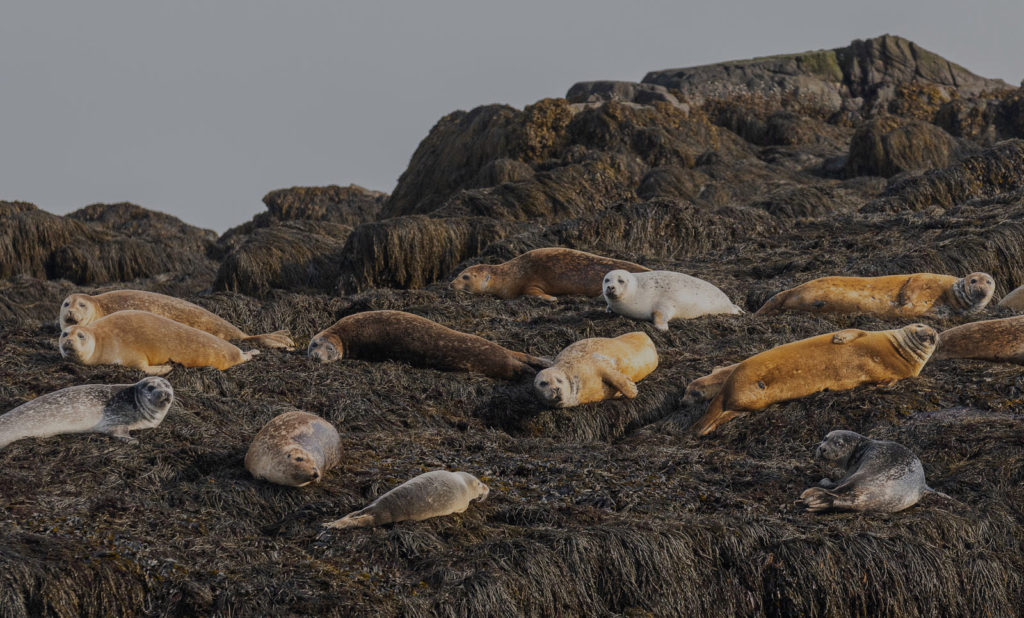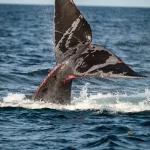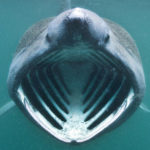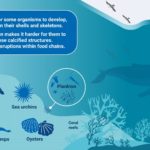Seal Rookery
March 22, 2022
By: Mahé Colas and Joanne Carney
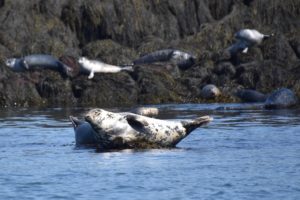 Four species of seals, including grey, harbour, harp and hooded seals, are commonly observed on shorelines around the Maritime provinces.
Four species of seals, including grey, harbour, harp and hooded seals, are commonly observed on shorelines around the Maritime provinces.
On our whale watching tours, the seals are often spotted lazing about on the rocky islands in the middle of the Bay of Fundy. These seal haul out locations are called ‘seal rookeries’ or ‘seal haul-outs’.
The term ‘rookery’ can be applied to a colony of breeding animals such as seabirds, marine mammals, and turtles. While the term rookery originally came from the nesting habits of rooks (a species part of the crow family). Here in the Bay of Fundy, there are many seal rookeries where large aggregation of harbour seals and grey seals can be observed between two high tides cycles.
The behavior of temporarily leaving the water between foraging (hunting) periods to spend time on land is typically associated with pinnipeds. Pinnipeds are a group of marine mammals that include seals, sea lions, fur seals and walrus.
These individuals haul themselves out of the water at low tide on these rocky ledges. These seal rookeries are used for reproduction, mating and giving birth. They are also used for avoiding predators, thermoregulation, socializing, moulting, nursing, resting and removing parasites.
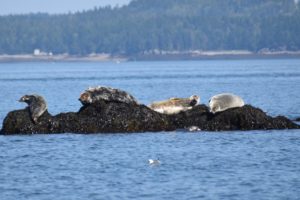 Different seals species may have different haul-out patterns depending on physical constraints like air temperature, wind speed and time of day. In addition to these, there are also biological constraints such as moulting, age and sex and geographical limitations that could affect the range and number of individuals at one location.
Different seals species may have different haul-out patterns depending on physical constraints like air temperature, wind speed and time of day. In addition to these, there are also biological constraints such as moulting, age and sex and geographical limitations that could affect the range and number of individuals at one location.
Seals are known to be extremely agile in the water and super clumsy on land. They take full advantage of these rocks up until the last second. They can be found laying in a banana shape balancing themselves on the rocks until they get pushed off by the incoming tide. Once the tide is high and covers these rocks, the seals are usually out hunting but at a higher risk to be preyed on by great white sharks and other predators in the surrounding waters.
The newborn seal babies, are generally born on these rookeries in the spring. They are born at low tide and must learn to swim with hours of birth before the tide rises again! Mothers will typically nurse the pups for 4-6 weeks. In their early weeks of life, the mother harbour seal may carry the pup on her back while swimming and diving.
The rookeries are also used for moulting once a year, when a seal sheds their old coats and grow new skin and hair. During this time, the seals spend a particularly large amount of time ashore on these rocky rookeries and spend little or no time feeding in the water. By staying ashore, they minimize heat loss and maintain a relatively high temperature, which encourages blood flow close to the skin, thus accelerating the molting process. More seals will be seen hauled out at low tide on the rocks during the moulting period generally last summer to early fall.
Contrary to popular belief, the seals, when hauled out, are not simply “basking in the sun”. We know this because seals in temperate regions haul out regularly even on the coldest winter days, and seals in polar regions remain hauled out on the ice, even during the most ferocious storms.
Come and enjoy watching the seals hauled out on the rookeries of the Bay of Fundy!
